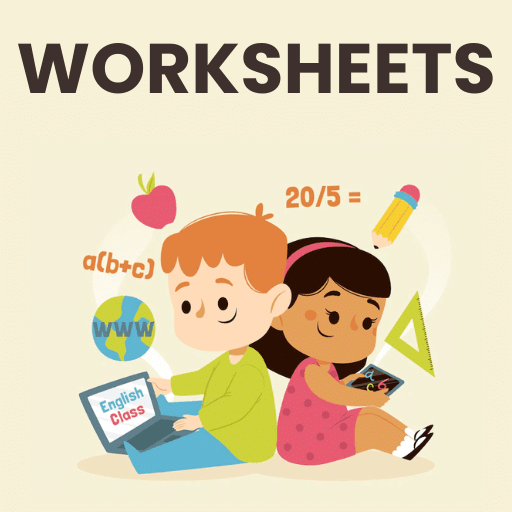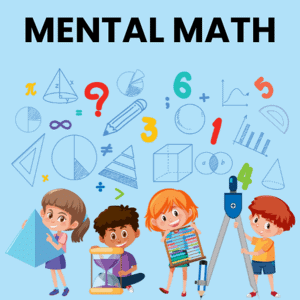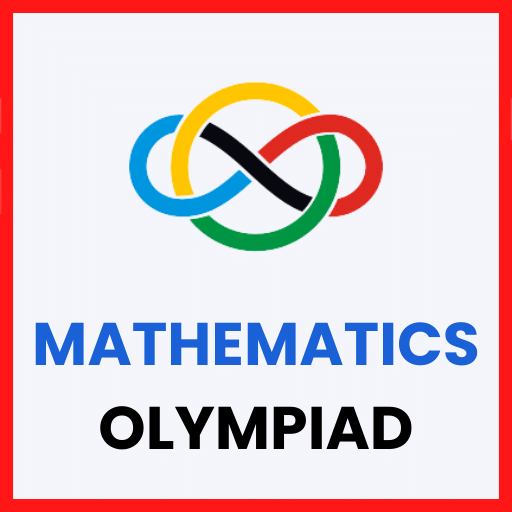Revision Notes: Permutations and Combinations | Mathematics (Maths) for JEE Main & Advanced PDF Download
| Table of contents |

|
| Important Formulas |

|
| Combinations under Restrictions |

|
| Combinations of Alike Objects |

|
| Division into Groups |

|
| Circular Permutation |

|
| Problem-Solving Tactics |

|
| Solved Examples |

|

Important Formulas
(a) Permutation (Arrangement of Objects):
Each of the different arrangements, which can be made by taking some or all of a number of objects, is called permutation.
(i) The number of permutations of n different objects taken r at a time is:
(ii) The number of all permutations of n distinct objects taken all at a time is n!
(iii) Permutation with Repetition: The number of permutations of n different objects taken r at a time when each object may be repeated any number of times is nʳ.
(iv)Permutation of Alike Objects: The number of permutations of n objects taken all at a time in which p are alike objects of one kind, q are alike objects of a second kind, and r are alike objects of a third kind, and the rest (n - (p + q + r)) are all different, is:
(v) Permutation under Restriction: The number of permutations of n different objects, taken all at a time, when m specified objects always come together is: m! × (n - m + 1)!
(b) Combination (Selection of Objects):
Each of the different groups or selections that can be made by taking some or all of several given objects without reference to the order of the objects in each group is called a combination.
The number of all combinations of n objects, taken r at a time, is generally denoted by 

Note:
(a) The number of ways of selecting r objects out of n objects is the same as the number of ways in which the remaining (n - r) can be selected and rejected.
(b) The combination notation also represents the binomial coefficient. That is, the binomial coefficient nCᵣ is the combination of n elements chosen r at a time.
(c) (i) nCᵣ =nCₙ₋ᵣ
(ii) nCᵣ + nCᵣ₋₁ = (n+1)Cᵣ
(iii) nCₓ =nCᵧ ⇒ x = y or x + y = n
(iv) If n is even, then the greatest value of nCᵣ is nCₙ/₂
(v) If n is odd, then the greatest value of nCᵣ is nC₍ₙ₊₁₎/₂
(vi) nC₀ + nC₁ + … + nCₙ = 2ⁿ
(vii) nCₙ + n+1Cₙ + n+2Cₙ + … + 2ⁿ⁻¹Cₙ = 2ⁿCₙ₊₁
Combinations under Restrictions
(a) The number of ways of choosing r objects out of n different objects if p particular objects must be excluded is: (n - p)Cᵣ
(b) The number of ways of choosing r objects out of n different objects if p particular objects must be included (p ≤ r) is: n - pCᵣ₋ₚ
(c) The total number of combinations of n different objects taken one or more at a time is: 2ⁿ - 1
Combinations of Alike Objects
(a) The number of combinations of n identical objects taking (r ≤ n) at a time is 1.
(b) The number of ways of selecting r objects out of n identical objects is n + 1.
(c) If out of (p + q + r + s) objects, p are alike of one kind, q are alike of a second kind, r are alike of a third kind, and s are different, then the total number of combinations is:
(p + 1)(q + 1)(r + 1)2ˢ - 1
(d) The number of ways in which r objects can be selected from a group of n objects of which p are identical is:

Division into Groups
(a) The number of ways in which (m + n) different objects can be divided into two unequal groups containing m and n objects respectively is:

If m = n, the groups are equal, and in this case, the number of divisions is:

(as it is possible to interchange the two groups without obtaining a new distribution).
(b) However, if 2n objects are to be divided equally between two persons, then the number of ways is:

(c) The number of ways in which (m + n + p) different objects can be divided into three unequal groups containing m, n, and p objects respectively is:

If m = n = p, then the number of groups is

However, if 3n objects are to be divided equally among three persons, then the number of ways is:

(d) The number of ways in which mn different objects can be divided equally into m groups if the order of groups is not important is

(e) The number of ways in which mn different objects can be divided equally into m groups if the order of groups is important is

Circular Permutation
(a) The number of circular permutations of n different objects taken r at a time:
nPᵣ / r, when clockwise and anticlockwise orders are treated as different.
nPᵣ / 2r, when clockwise and anticlockwise orders are treated as the same.
(b) The number of circular permutations of n different objects altogether
nPₙ / n = (n - 1)!, when clockwise and anticlockwise orders are treated as different
nPₙ / 2n = 1/2(n - 1)!, when above two orders are treated as the same.
(c) For given n different digits a₁, a₂, a₃, ... aₙ, the sum of the digits in the units place of all the numbers formed (if numbers are not repeated) is:
(a₁ + a₂ + a₃ + ... + aₙ) (n - 1)!
i.e. (sum of the digits) (n - 1)!
(d) The sum of the total numbers which can be formed with given different digits a₁, a₂, a₃, ... aₙ is:
(a₁ + a₂ + a₃ + ... + aₙ) (n - 1)! (111... n times)
Let N = pᵃ . qᵇ . rᶜ ... where p, q, r, ... are distinct primes & a, b, c, ... are natural numbers, then:
(a) The total number of divisors of N including 1 and N is:
(a + 1) (b + 1) (c + 1) ...
(b) The sum of these divisors is:
(p⁰ + p¹ + p² + ... + pᵃ) (q⁰ + q¹ + q² + ... + qᵇ) (r⁰ + r¹ + r² + ... + rᶜ) ...
(c) The number of ways in which N can be resolved as a product of two factors is:

(d) The number of ways in which a composite number N can be resolved into two factors which are relatively prime (or coprime) to each other is equal to 2ⁿ⁻¹, where n is the number of different prime factors in N.
(i) Exponent of a Prime P in N!

(ii) Inclusion-Exclusion Principle:
The principle of inclusion-exclusion states that for finite sets A₁, A₂, ... Aₙ, one has the identity:

(iii) This can be compactly written as:

(iv)Derangements Theorem:
The number of ways in which n letters can be placed in n envelopes (one letter in each envelope) so that no letter is placed in the correct envelope is:
If n objects are arranged at n places, then the number of ways to rearrange exactly r objects at right places is:
 |
Download the notes
Revision Notes: Permutations and Combinations
|
Download as PDF |
Some Important Results
(a) The number of totally different straight lines formed by joining n points on a plane of which m (< n) are collinear is: nC₂ - mC₂ + 1
(b) The number of total triangles formed by joining n points on a plane of which m (< n) are collinear is: nC₃ - mC₃
(c) The number of diagonals in a polygon of n sides is: nC₂ - n
(d) If m parallel lines in a plane are intersected by a family of other n parallel lines, then the total number of parallelograms formed is: mC₂ × nC₂
(e) Given n points on the circumference of a circle, then:
The number of straight lines between these points is nC₂
The number of triangles between these points is nC₃
The number of quadrilaterals between these points is nC₄
(f) If n straight lines are drawn in the plane such that no two lines are parallel and no three lines are concurrent, then the number of parts into which these lines divide the plane is: 1 + Sₙ
Problem-Solving Tactics
- In any given problem, first try to understand whether it is a problem of permutations or combinations. Now, think if repetition is allowed and then try solving problem.
- A simple method to solve these problems where repetition is not allowed is as follows -First draw series of dashes representing the number of places you want to fill or number of items you want to select.
- Now start filling dashes by the number of objects available to choose from and multiply the numbers. This is the final answer for a permutations problem.
- If it is a combination problem then divide the answer with the factorial or number of items.
- This calculation becomes complex if repetition is allowed.
Solved Examples
Que 1: There are ten points in a plane. Of these ten points, four points are in a straight line and with the exception of these four points, no three points are in the same straight line.
Find:
(i) The number of triangles formed.
(ii) The number of straight lines formed.
(iii) The number of quadrilaterals formed by joining these ten points.
Ans:
Sol 23:(i) Number of triangles= ¹⁰C₃ - ⁴C₃
= 116
(ii) Number of straight lines
= ⁶C₂ + (6 × 4) + 1
= 15 + 24 + 1 = 40
(iii) Number of quadrilaterals
= ¹⁰C₄ - ⁴C₃ × 6 - ⁴C₄
= 185
Que 2: Six "X" (crosses) have to be placed in the squares of the figure given below, such that each row contains at least one X. In how many different ways can this be done?
Ans:
Sol 26:
Cases not allowed are considered.Using the combination formula:⁸C₆ - 2 = 26
Thus, the total number of different ways to place the crosses is 26.
Que 3: The 120 permutations of MAHES are arranged in dictionary order, as if each were an ordinary five-letter word.
The last letter of the 86th word in the list is:
(A) A
(B) H
(C) S
(D) E
Ans:
Sol 3: (D)
Arranging the permutations step-by-step:Thus, the last letter of the 86th word is E.So, the correct answer is (D) E.
Que 4: How many of the 900 three-digit numbers have at least one even digit?
(A) 775
(B) 875
(C) 100
(D) 101
Ans: (A)Total three-digit numbers = 900Numbers with no even digit:
Each digit is chosen from 1, 3, 5, 7, 9 (5 choices per place).
So, total such numbers = 5³ = 125
Numbers with at least one even digit = Total - Numbers with no even digit
= 900 - 125 = 775
Thus, the correct answer is (A) 775.
Que 5: An English school and a Vernacular school are both under one superintendent. Suppose that the superintendency, the four teachership of English and Vernacular school each, are vacant. If there are altogether 11 candidates for the appointments: 3 candidates apply exclusively for the superintendency 2 candidates apply exclusively for the appointment in the English school Find the number of ways in which the different appointment can be disposed of:
(A) 4320
(B) 268
(C) 1080
(D) 25920
Ans:
Sol 25: (D)
Total appointments = 11Total ways to distribute the appointments:= (2! × 3! × 6!) × 3
= 8640 × 3
= 25920
Thus, the correct answer is (D) 25920.
Que 6: A question paper on mathematics consists of twelve questions divided into three parts A, B, and C, each containing four questions.
In how many ways can an examinee answer five questions, selecting at least one from each part?
(A) 624
(B) 208
(C) 1248
(D) 2304
Ans:
Sol 27: (A)
Possible distributions of five questions:
(1,1,3)
(1,2,2)
Total ways:
= 3 × (⁴C₁ × ⁴C₁ × ⁴C₃ + ⁴C₁ × ⁴C₂ × ⁴C₂)
= 3 × (64 + 144)
= 624
Thus, the correct answer is (A) 624.
Que 7: There are 10 red balls of different shades & 9 green balls of identical shades.
Find the number of such arrangements such that no two green balls are together in the row:
(A) (10!) . ¹¹P₉
(B) (10!) . ¹¹C₉
(C) 10!
(D) 10! 9!
Ans:
Sol 32: (B)There are 11 spaces around these balls where the 9 green balls can be placed.
Choose 9 spaces from these 11 spaces → ¹¹C₉ ways.
Thus, total arrangements:
= ¹¹C₉ × 10!
Thus, the correct answer is (B) (10!) . ¹¹C₉.
Que 8: There are 12 guests at a dinner party. The master and mistress of the house have fixed seats opposite one another. Two specified guests must always be placed next to one another. Find the number of ways in which the company can be placed:
(A) 20 × 10!
(B) 22 × 10!
(C) 44 × 10!
(D) None
Ans: (a)2 × 10 ×10!=Sol.20 10!
Que 9: The number of seven-digit integers, with sum of the digits equal to 10 and formed by using the digits 1, 2, and 3 only, is (2009)
(A) 55
(B) 66
(C) 77
(D) 88
Ans:
Sol 7: (C)
There are two possible cases:
Case-I:
Five 1’s, one 2, one 3
Case-II:Four 1’s, three 2’s
Total number of numbers:= 42 + 35
= 77
Thus, the correct answer is (C) 77.
Que 10: Number of ways in which they can be divided into 4 equal groups if the players P₁, P₂, P₃, and P₄ are in different groups, is:
(A) (11!) / 36
(B) (11!) / 72
(C) (11!) / 108
(D) (11!) / 216
Ans:
Sol 56: (C)
Thus, the correct answer is (C) (11!) / 108.
|
209 videos|446 docs|187 tests
|
FAQs on Revision Notes: Permutations and Combinations - Mathematics (Maths) for JEE Main & Advanced
| 1. What are permutations and combinations, and how do they differ? |  |
| 2. How do I calculate the number of permutations of a set of items? |  |
| 3. What is the formula for combinations, and when should I use it? |  |
| 4. Can you provide an example of a problem that involves both permutations and combinations? |  |
| 5. How are permutations and combinations applied in the JEE exam? |  |




























